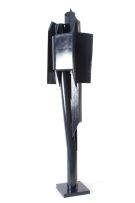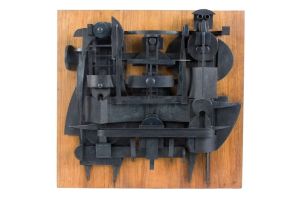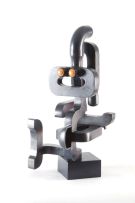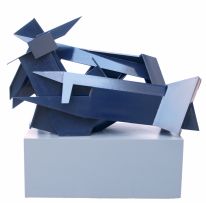Important South African Art
Live Auction, 16 May 2011
Session Two
About this Item
signed and dated 1966
Notes
By the 1960s Villa had established his signature style of bold sculptural forms which, though abstracted from nature, retained a strong semblance of the human figure. His metal sculptures were gaining wider interest. They were first seen outside South Africa when art collector and gallerist, Egon Guenther, organised an exhibition that toured Rome, Florence, Milan and Venice in 1963. Artists whose works were considered to reflect distinct African qualities - such as Cecil Skotnes, Sydney Kumalo, Giuseppe Cattaneo and Cecily Sash - were included along with Villa in what came to be known as the Amadlozi group (meaning 'spirit of our fathers').
In 1965 Villa exhibited at the Durban Art Gallery and in 1966 and 1967 was the subject of an article in Lantern, the prestigious cultural journal of the time, and a monograph both authored by Lola Watter.
Villa's Sentinel, produced in the mid-1960s, brings together elements of international and local influences. In Villa's native Italy the decade of the 1950s was characterised by strongly opposing views between the figurative approach of sculptors such as Marino Marini and the non-figurative work of artists like Arnoldo Pomodoro and Lucio Fontana. Refusing to be confined in either camp, Villa forged an art of abstracted images that remain grounded in the iconic human form.
By combining mechanical forms with more rounded, anthropomorphic elements he creates heroic figures which in their symmetrical and heraldic nature resemble the powerful ancestral figures of traditional African art. Incorporating solid metal pieces, they fuse mechanical parts and human forms into futuristic beings that extol the achievements of an increasingly industrialised country.










